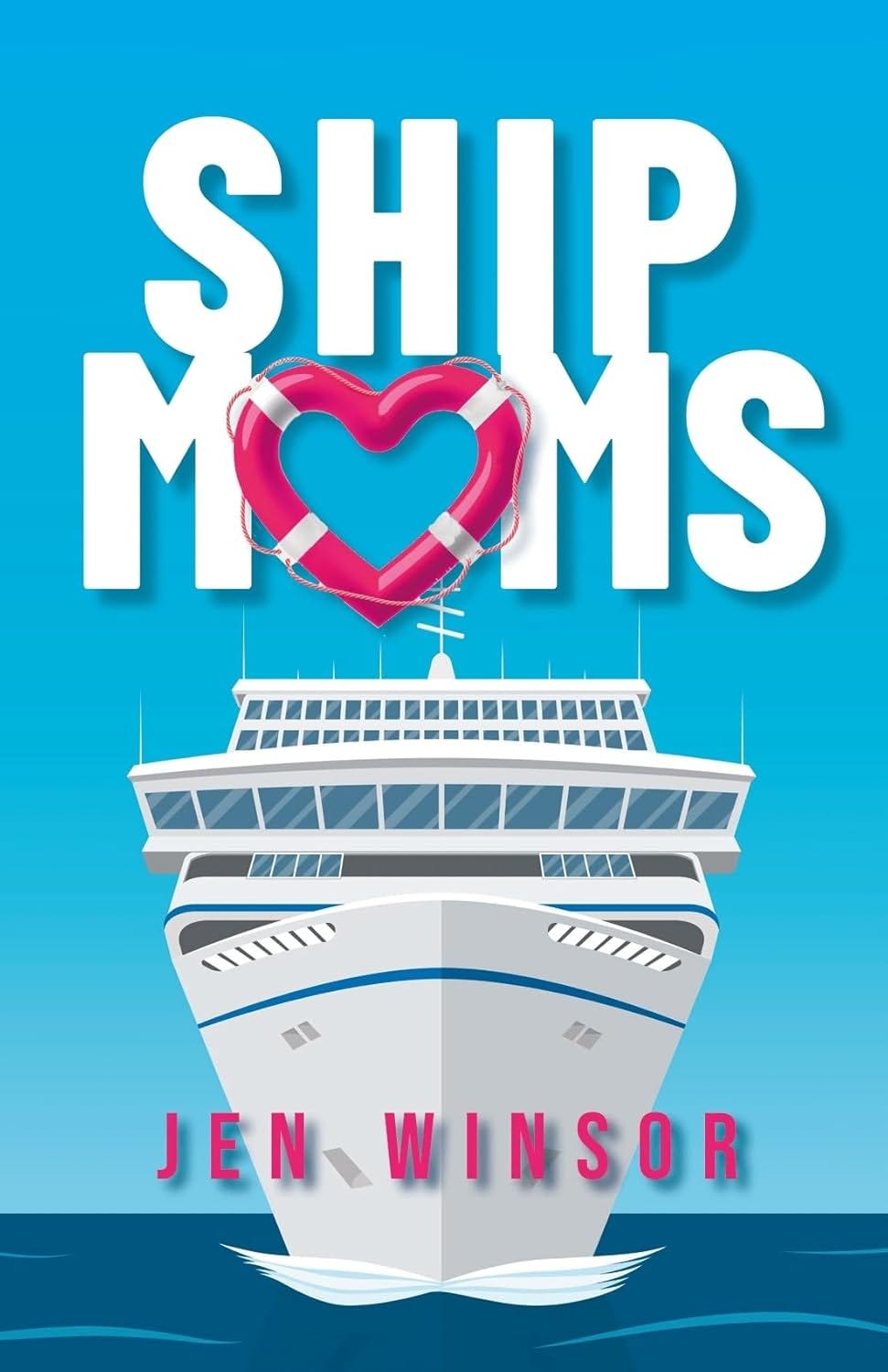Lust, Love, and Pregnancy: Ship Moms by Jen Winsor
Reviewed by Robin McGrath
Jen Winsor, the author of Ship Moms, tells the story of how, while working as an entertainment director aboard a luxury cruise liner, she got pregnant by a fellow crew member. In trying to cope with her situation, Winsor joined a Facebook group called Royal Moms, for women who had conceived while working for Royal Caribbean and wanted to connect with other mothers from that cruise line. Postings included photos of the babies, what countries the mothers were from, what countries the fathers were from, what their jobs had been on board the ships, and what ships their babies had been conceived on.
One would think that a Facebook group with such specific parameters would be relatively small, but the Royal Caribbean site had over 1400 ship-mom becoming members within a year of launching.
“The stories of the individual women in this book often read like compressed versions of romance novels, but there is enough context to make Ship Moms an engaging read.”
Having done a number of voyages as cook aboard a yacht in the Caribbean, and one trip as a guide on a larger vessel in the North Atlantic, I thought this book would be of interest to me. However, it turned out that what I knew about working aboard larger commercial cruise ships could fit in my eye. Prior to the COVID-19 pandemic, over thirty-two million passengers were anticipated for the year 2020. I had no idea how big the potential audience for a book about cruise ship passengers and crews might be.
The organization of the book is simple, and if it has not already been copied, it will be before long. Winsor invited women on the Royal Moms Facebook to contact her, outlining their experiences of intercultural relationships that resulted in unplanned pregnancies. She interviewed many of these women by FaceTime, narrowed the pool of informants down to 100 individuals, conducted further interviews with the subjects, and from these focused on nine of the women and their babies whom she thought were in some ways representative of the group as a whole.
Winsor tells the individual stories of these women in brief ten or twenty-page profiles, interspersed with chapters reflecting on how their subjects experiences were similar or different from her own. Many of the babies were the result of one-night stands, most participants had not anticipated the emotional and financial complications of an unwanted pregnancy, and in quite a number of cases, the fathers had no intention of informing the wife and kids back home about the existence of another member of the family on the other side of the world.
An important element of the whole hook-up scene aboard ship--and presumably on land also--was the non-stop party atmosphere of such cruises, which featured quantities of cheap and readily available alcohol. It’s obvious from Winsor’s account of her own behaviour that drinking played a large part in the conception of many of these babies, and Winsor confronts this fact and recommends sobriety as the only way to avoid many of the problems she encountered, despite which she and the child’s father are together now and living in Newfoundland.
Towards the end of the book, Winsor gives a brief but vivid account of what happened when COVID-19 invaded the cruise ship world. At the beginning of the pandemic, “more than half of Corona cases outside China were on a single cruise ship, the Diamond Princess.” With more than thirty-seven hundred people on board, seven hundred people got infected and thirteen individuals died. Ports were closed to these “floating cesspools,” crews were refused repatriation, crew suicides spiked, and families at home were impoverished when salaries were cut or denied entirely.
The stories of the individual women in this book often read like compressed versions of romance novels, but there is enough context to make Ship Moms an engaging read. What stood out from this work, however, was how simple it was for the author to locate, contact, and interview women whose lives reflected her own. There is no bibliography, and of the 24 endnotes Winsor provided, all were to web sites. Not one book is cited in this wide-ranging work. This might be the reality of future research projects, but I’m not sure it’s an improvement on more conventional journalism. It may well be a glimpse into the future of the writing life, a future this reader does not look forward to.
About the Author
Jen Winsor is an arts administrator who has worked in the Newfoundland and Labrador arts scene for almost 20 years, focusing on music and literature. Jen left the province to travel with Royal Caribbean Cruise Line’s Arts and Entertainment Division, but her plans were cut short when she got pregnant, with a crew member 12 years younger than her. Returning to her home province, she happily became the Executive Director of WritersNL. When she’s not lost in a book or typing up funding applications, you’ll find her hiking the East Coast Trail, enjoying a drag show, or experiencing some live music. Jen lives in St. John’s with her son, Gabriel, and his ridiculously good-looking Brazilian dad, Luiz.
About the Reviewer
Robin McGrath was born in Newfoundland. She earned a doctorate from the University of Western Ontario, taught at the University of Alberta, and for 25 years did research in the Canadian Arctic on Inuit Literature and culture before returning home to Newfoundland and Labrador. She now lives in Harbour Main and is a full-time writer. Robin has published 26 books and over 700 articles, reviews, introductions, prefaces, teaching aids, essays, conference proceedings and chapbooks. Her most recent book is Labrador, A Reader’s Guide. (2023). She is a columnist for the Northeast Avalon Times and does freelance editing.
Book Details
Publisher: Breakwater
Publication date: 2025
Language: English
Print length : 257 pages
ISBN: 9781778530616




